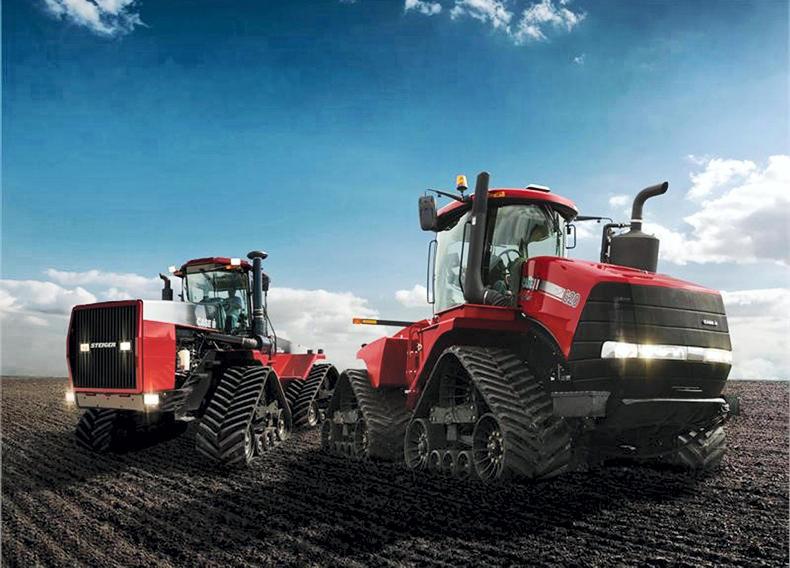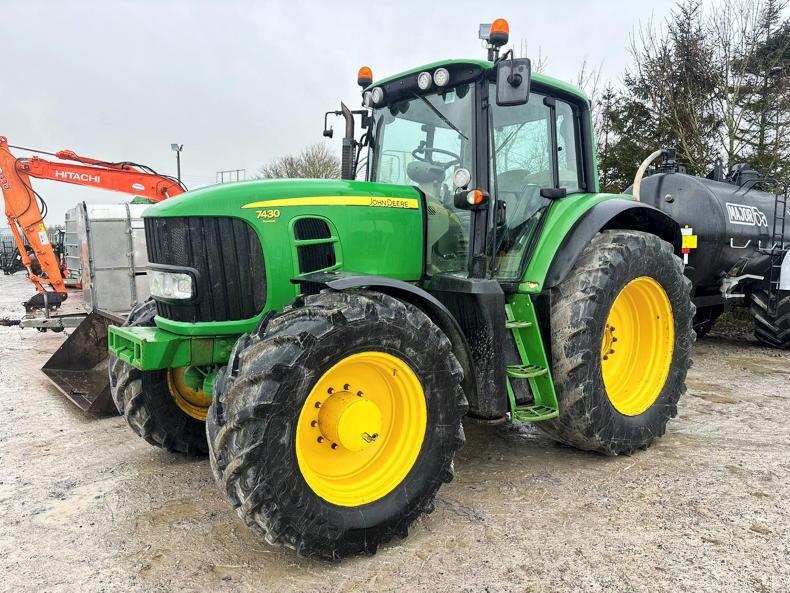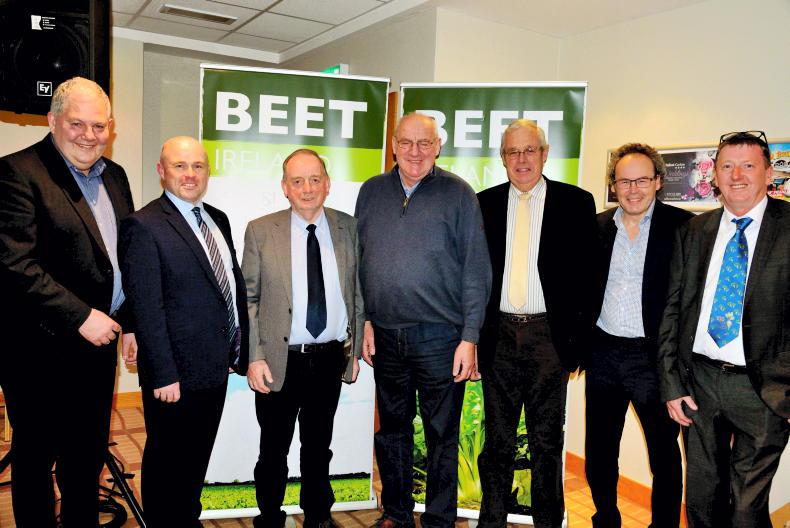While it may have been launched just over two decades ago, the history of the Case IH Quadtrac can be traced back around 40 years further than that. to the foundation of Steiger, the legendary lime-green articulated high-horsepower tractor maker.
It was the acquisition by Case IH in 1986 of the company that came to make its home in the US city of Fargo, North Dakota, that led to the development of the world’s first articulated rubber-tracked tractor.
John Steiger and his sons, Douglas and Maurice, farmed a large cropping operation near Red Lake Falls, in the neighbouring state of Minnesota. Over the winter of 1957-1958, having sought greater power to pull wider implements and boost output and timeliness, they built the first Steiger tractor, featuring a distinctive lime-green livery, in a farmyard barn.
With equal wheels, full-time 4wd and articulated steering, it was made largely from salvaged truck and construction equipment parts, and powered by a 238hp Detroit Diesel engine.
Impressed by its performance, neighbouring farmers began asking the Steigers to produce similar tractors for them, and in 1961 the family built three further machines. By 1963, with demand justifying commercial production, a range of 130-318hp models had been developed, designed by Douglas Steiger and produced by Maurice.
With around 125 tractors having been built on the Steiger farm, and employee numbers expanding, in 1969 Steiger opened a factory at Fargo, in neighbouring North Dakota. New model names were adopted to convey the tractors’ power and capabilities, including the Super Wildcat, Cougar, Bearcat, and Turbo Tiger. Dealers were appointed across North America, and over the next decade importers were signed in other countries, including the UK, where Warwickshire-based farmers the Moreton family formed Offchurch Tractors.
May 1974 saw work begin on a new production facility in Fargo, and in updated form this remains today the home of Case IH Steiger and Quadtrac production. The new 39,000sq m plant could produce a tractor every 18 minutes, and ultimately employed over 1,100 people.
In 1976, Steiger launched revised Series III models, and later began producing tractors for other manufacturers seeking to add high-power tractors to their own lines without incurring high development costs. Among them was International Harvester, which added its own styling touches to a range of red-liveried articulated tractors.
The Fargo factory built its 10,000th tractor in 1979, but the global farm economy was depressed. Despite this, a new 1000 tractor series with new cab and styling was launched in 1982. The following year, Steiger unveiled its largest tractor to date, the 525hp KP-525 Tiger IV, while in 1986 it revealed its smallest product model of the modern era, the 190hp Puma 1000, with a steerable front axle for additional steering precision in row crops.
With the world farming recession continuing into the mid-1980s, large farm investment dwindled, impacting Steiger’s business. But there remained significant demand for its products and respect for its reputation, and in 1986 Steiger was purchased by Tenneco, then the parent of Case IH. Gradually the Steiger green livery was replaced by Case IH red, but while the Steiger name was retired for the subsequent Case IH 9100 and 9200 series tractors, its strong reputation meant it was reintroduced in 1996 with the 9300 series, which topped out at 425hp.
Soon after the Tenneco takeover, the Quadtrac development team was formed to investigate the feasibility of combining rubber tracks with articulated steering to overcome issues with the differential “skid” steering of conventional twin-track crawlers.
Four tracks and pivot steering increased ground contact over undulating land, evenly distributed weight along the tracks and eliminated headland scrubbing or loss of traction when turning or making steering corrections. Positive drive overcame the friction problems associated with twin-track designs, while pivoting track drive units maintained ground contact.
While the first rubber-tracked tractors made roadwork easier, the Quadtrac’s four-track articulated design aimed to improve fieldwork traction, enhance flotation and reduce compaction, thereby aiding plant root growth, water infiltration and nutrient retention. The first public showing of a Quadtrac prototype, based on a 300hp 9150, was at the 1992 US Farm Progress Show in Columbus, Indiana, where enthusiastic farmer feedback encouraged Case IH to progress its development.
New cable-reinforced tracks and a revised drive system, plus a patented sealed midroller design, saw the next generation prototypes capable of 40km/h (25mph). The wheeled tractor platform on which the Quadtrac development was based was upgraded from the 300hp 9250 to the 335hp 9270.
Based on a next-generation 360hp 9370 wheeled articulated tractor, but unnumbered in its initial incarnation, the production Quadtrac, which imposed ground pressures as low as 0.3 bar (4.9psi), was unveiled to North American farmers in September 1996 at the Farm Progress Show at Amana in Iowa. Its European debut was at the SIMA show in Paris the following February.
In 1998, the original 360hp Quadtrac gained a 400hp stablemate, and the two machines were numbered as the 9370 and 9380. Two years later, on February 25 and 26 2000, Case IH employee Jean Imbert smashed the world 24hr ploughing record with a Quadtrac 9380 and 17-furrow reversible Gregoire Besson plough, covering 209.42ha (517 acres) in southwest France, with refuelling carried out on the move to achieve an 8.7ha/hr (21.5ac/hr) output.
After almost four years, the Case IH Steiger wheeled tractors on which Quadtracs were and still are based underwent a radical redesign, resulting in the launch in 2000 of four new 275-440hp STX Steiger wheeled models and two 375hp and 440hp Quadtracs. They featured fresh styling and a completely new Surveyor cab, with curved glass, new controls and the red leather seating that has become familiar in high-hp Case IH tractors. An upgraded 16-speed powershift replaced the previous 12-speed unit.
In 2002, when the Steiger and Quadtrac tractors were re-engineered to meet Stage II emissions legislation, the STX440 flagship was replaced by the STX450. A year later, an STX500 was added at the top of the line, and it was one of these in Quadtrac format that, in 2005, set another world 24hr ploughing record, covering 320.5ha (792ac) using a Gregoire Besson 20-furrow reversible. On 20 January 2005, an STX500 Quadtrac also became the 50,000th Steiger-manufactured tractor.
Launched that same year, the latest generation Steiger line spanned the models 370 to 620, with the 470-620 also available in Quadtrac format. They retain the drive arrangement that uses three mid-rollers, claimed to provide even weight distribution and smooth ride along the track. Producing a maximum 692hp, the FPT engines meet the latest Stage IV emissions legislation without the need for a particulate filter. And for the first time, all but the top two models can be equipped with CVXDrive CVT as an alternative to the standard powershift.














SHARING OPTIONS